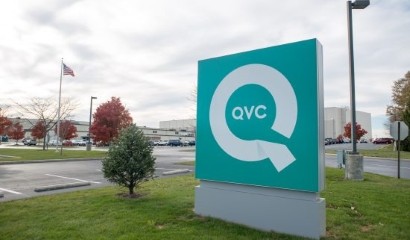Heimstaden on track with asset privatisation for debt reduction, liquidity concerns linger – 1Q24 Credit Report and outlook
Included below: capital structure, FX impact, interest coverage, liquidity, asset privatisation, valuation analysis, recovery analysis, financials and organisational structure.
Heimstaden AB (Heimstaden), a Swedish real-estate company focusing on the residential space, has been paring back debt since 3Q23 through the privatisation of home units held by its operating subsidiary, Heimstaden Bostad (Bostad). Between 3Q23 to 1Q24, Bostad generated SEK 2.06bn from the privatisation of home units for debt repayment. Rental income grew 5% year-on-year (YoY) in 1Q24, aided by an increase in home units, partially offset by divestment of the company’s Icelandic portfolio in October 2023. Heimstaden reported free cash flow (FCF) of negative SEK 686m in 1Q24 (1Q23: negative SEK 1.95bn), with its cash balance plunging to SEK 3.7bn (FY23: SEK 12.4bn) following debt repayment. However, this did not translate into lower debt, as depreciation of the reporting currency (SEK) resulted in total borrowings (excluding leases) remaining relatively flat at SEK 200bn (FY23: SEK 201bn), with net leverage edging up to 19.9x (FY23: 19.6x). There is lingering concern over impending maturities of SEK 13.2bn and SEK 15.7bn due in FY24 and FY25, respectively.
To conserve liquidity, Heimstaden announced in its FY23 report (dated 27 April 2024) that it would indefinitely defer interest payments on the SEK-denominated hybrid bonds. Previously, on 27 February, Fitch downgraded Heimstaden to ‘B’ from ‘BB’, while retaining a negative outlook. In addition, subsidiary Bostad did not propose dividends for any of its share classes, according to information from the FY23 report. Then, on 21 March, Fitch downgraded Bostad to ‘BBB-‘ from ‘BBB’, with a negative outlook, reflecting continuing pressure on liquidity. On 1 July, Bostad’s EUR 500m senior unsecured bonds due 2026 were trading at 91.4 (yielding 7.2%), which we consider to be fairly priced, given higher leverage and liquidity concerns partially offset by stable rental and adj. EBITDA prospects. By comparison, Heimstaden AB’s EUR 350m 4.25% unsecured bonds due 2026 were trading lower at 74.1(yielding 23.7%), likely because of structural subordination, which is also reflected in lower credit ratings (see capital structure).
FX impact inflates debt but boosts property valuations: despite repaying borrowings of SEK 7.6bn (net) in 1Q24, total debt (excl. leases) was stable at SEK 200bn (FY23: SEK 201bn) because of depreciation of the SEK against the EUR. Debt denominated in EUR accounted for around 63% of total debt (excl. leases) at FY23. We note that the average interest rate decreased to 3% in 1Q24 from 3.2% as of FY23, as interest rate-hedged positions expanded to 87.6% versus 85.6% at FY23. However, the company did not disclose details of whether currency hedges were in place.
On the other side, currency depreciation led to higher property valuations across most geographic segments (except Norway), with portfolio valuations rising SEK 10.7bn to SEK 331bn (FY23: SEK 321.2bn). Consequently, the loan-to-value (LTV) ratio was stable at 59% in 1Q24 (FY23: 58.9%). The company has a secured debt LTV incurrence covenant with a threshold of 40% (1Q24 actual: 32.2%), indicating sufficient headroom.
Cash balances slumped to SEK 3.7bn (FY23: SEK 12.4bn), thereby inflating net debt (incl. leases) to SEK 197.6bn (FY23: SEK 190.1bn), while net leverage remained high at 19.9x (FY23: 19.6x) considering reported EBITDA of SEK 9.9bn in LTM 1Q24. Based on Debtwire-calculated adj. EBITDA of SEK 9.4bn, net leverage stands at 20.9x (FY23: 20.1x). Accounting for debt maturing after 1Q24 (see capital structure for details) and SEK 750m of deferred consideration expected from Icelandic asset sales, pro forma net debt (incl. leases) declines marginally to SEK 196.8bn.
Low interest coverage at operating subsidiary: as of 1Q24, Bostad’s interest coverage ratio (ICR) stood at 1.9x (1Q23: 3.2x), while according to S&P’s calculations, the ICR was 1.6x. On the earnings call, Bostad noted that it would take measures to improve the ICR by reducing debt through asset disposals over the next couple of years.
Liquidity concerns prevail: Heimstaden reported liquidity of SEK 24.6bn as of 1Q24 (FY23: SEK 32.7bn), comprising SEK 3.75bn of cash and cash equivalents (FY23: SEK 12.49bn) and SEK 20.8bn of unutilised credit lines (majority maturing between three to five years with some extensions, as noted in Bostad’s FY23 earnings call). In March, Bostad announced that it expects to receive deferred payment of SEK 750m in 2Q24. This final instalment concludes the sale of the Icelandic real-estate company (Heimstaden ehf) to Fredensborg AS (sold in October 2023). Considering this, and pro forma debt repayments (approx. SEK 996m) in April and June, the cash balance stands at SEK 3.5bn versus short-term debt of SEK 15.1bn (Debtwire-calculated). Based on our estimates, Heimstaden is likely to raise SEK 9.4bn through asset privatisations (see details below) in the next twelve months (NTM); however, interest payments, capital expenditure and the acquisition of investment properties would drain NTME liquidity (before working capital changes) to SEK 14bn, which, on our calculations, would be an 18-month runway. Excluding asset-privatisation proceeds, Debtwire-estimated NTM liquidity drops to SEK 4.5bn. The company has borrowings of SEK 15.7bn maturing in FY25 and SEK 42.4bn in FY26.
Asset privatisations: in 3Q23, Bostad implemented a privatisation plan to sell its business units to private homeowners. Between 3Q23 and 1Q24, it divested SEK 1.8bn in gross asset value (GAV) by selling 527 units at a 31% premium, realising total sales proceeds of SEK 2.4bn, largely in Denmark and the Netherlands. Management allocated 88% of the sales proceeds (SEK 2.06bn) towards debt repayments. On the 1Q24 earnings call, management said the company would also privatise some home units in Norway and Germany from 2H24. According to the FY23 annual report, Heimstaden expects to privatise 2,147 units in FY24 to raise SEK 7.6bn and 3,076 units in FY25 for SEK 11.4bn, which would help to repay a significant portion of debt.
Fitch Ratings identifies a potential counter-trend in the housing market. While rising borrowing costs typically dampen affordability and favor the rental market, the expectation of lower mortgage rates and stable inflation may encourage homeownership. This trend could potentially drive up the housing prices.
Heimstaden AB’s standalone liquidity: Fitch flagged a potential cash crunch at holding entity Heimstaden AB following the suspension of dividend payments by Bostad, in which Heimstaden owns a 34.8% stake. These dividends are a part of the company’s core income (1Q24: nil; FY23: SEK 3.3bn; FY22: SEK 3.2bn). On a standalone basis, Heimstaden reported cash of SEK 450m as of 1Q24 (FY23: SEK 1bn) and debt of SEK 10.1bn (incl. SEK 1.9bn due in FY25). We note that the company has deferred interest payments on the hybrid bonds, while cancelling preferred dividends to conserve cash. Fitch’s analysis, based on Heimstaden’s FY23 liquidity, (SEK 1bn) suggests sufficient coverage for the near-term debt (until FY25). However, Fitch notes that the company may be required to dilute its stake to address maturities beyond FY25.
Financial recap: rental income climbed 4.8% YoY to SEK 3.8bn (1Q23: SEK 3.6bn), rising at a slower pace relative to corresponding growth recorded in the previous quarters. This is attributable to divestment of Icelandic assets in 3Q23 and implementation of the privatisation scheme (revenue impact: SEK 21m in 1Q24). On a like-for-like (LfL) basis, rental income grew 5.2% YoY. The company’s Debtwire-calculated EBITDA spiked 8.3% YoY to SEK 2.5bn (1Q23: SEK 2.3bn). However, Debtwire-calculated FCF remained negative SEK 513m (1Q23: negative SEK 1.9bn), despite the reduction in capital expenditure (capex) and cash outflow towards working capital. For FY24, management guides to a 30% YoY reduction in capex (FY23: SEK 8.43bn).
All geographical segments (except Norway) reported annual growth in rental income, backed by a rise in home units. As of 1Q24, 58.6% of rental income (FY23: 57.2%) was regulated (under rental contracts, with maximum rent regulated by authorities). This includes rental income earned from Sweden and Germany (100% regulated), Denmark (14.7%), the Netherlands (57.9%) and the Czech Republic (23.4%). The company’s economic occupancy rate was strong at 98.3% (1Q23: 98.2%).
Valuation analysis: Heimstaden’s peers operate at an average enterprise value (EV)/next twelve months’ expected (NTME) EBITDA multiple of 24.5x. The company is underperforming its peers, with a higher net debt/NTME EBITDA ratio of 20.3x (peers: 16.3x) and a lower NTME EBITDA margin of 60% (peer average: 72.2%). Considering this, along with cash burn, liquidity concerns, and ratings downgrades, we assume an EV/NTME EBITDA multiple of 20x for our valuation analysis, with base-case NTME adjusted EBITDA of SEK 9.7bn and NTME cash of SEK 9.2bn (see liquidity tab in the Excel model for our calculations). In this scenario, the entire debt stack is covered. On 1 July, Bostad’s EUR 500m senior unsecured bonds due 2026 were trading at 91.4 (yielding 7.2%).
Recovery analysis: in a distressed scenario, we assume delays in asset privatisations and a slowdown in the rental market, leading to lower margins and higher leverage. Thus, we assume a 20% downside to base-case NTME EBITDA and NTME cash, with full draw of the unutilised facilities. In this scenario, secured debt gets full coverage, while recovery for unsecured borrowings is 27% (with low and high ranges of 0% and 66%, respectively) at an EV/NTME EBITDA multiple of 20x.
Business description: Heimstaden AB is a Sweden-based real-estate investor that acquires, develops and manages properties across 10 European nations. As at 31 March, the company’s portfolio was valued at SEK 331bn, with Sweden accounting for 27.1%, followed by Germany (24.8%), Denmark (22.5%), the Netherlands (8.7%), and others (17%). The company owned 162,346 home units as of 1Q24. It earns rental income from residential premises (91.8% of LTM 1Q24 rental income), commercial premises (6.8%) and garages/parking spaces (1.4%). Geographically, the company earns revenue from Sweden (30% of LTM 1Q24 revenue), Denmark (23%), Germany (18%), the Netherlands (9%), the Czech Republic (11%), and others (8%). In October 2023, Heimstaden sold all its properties in Iceland.
Corporate structure:
Useful Links:
























